We already compared Samsung's new flagship phones to the iPhone 6, but let's line up the Galaxy S6 and Galaxy S6 edge next to Apple's phablet, the iPhone 6 Plus.
Size
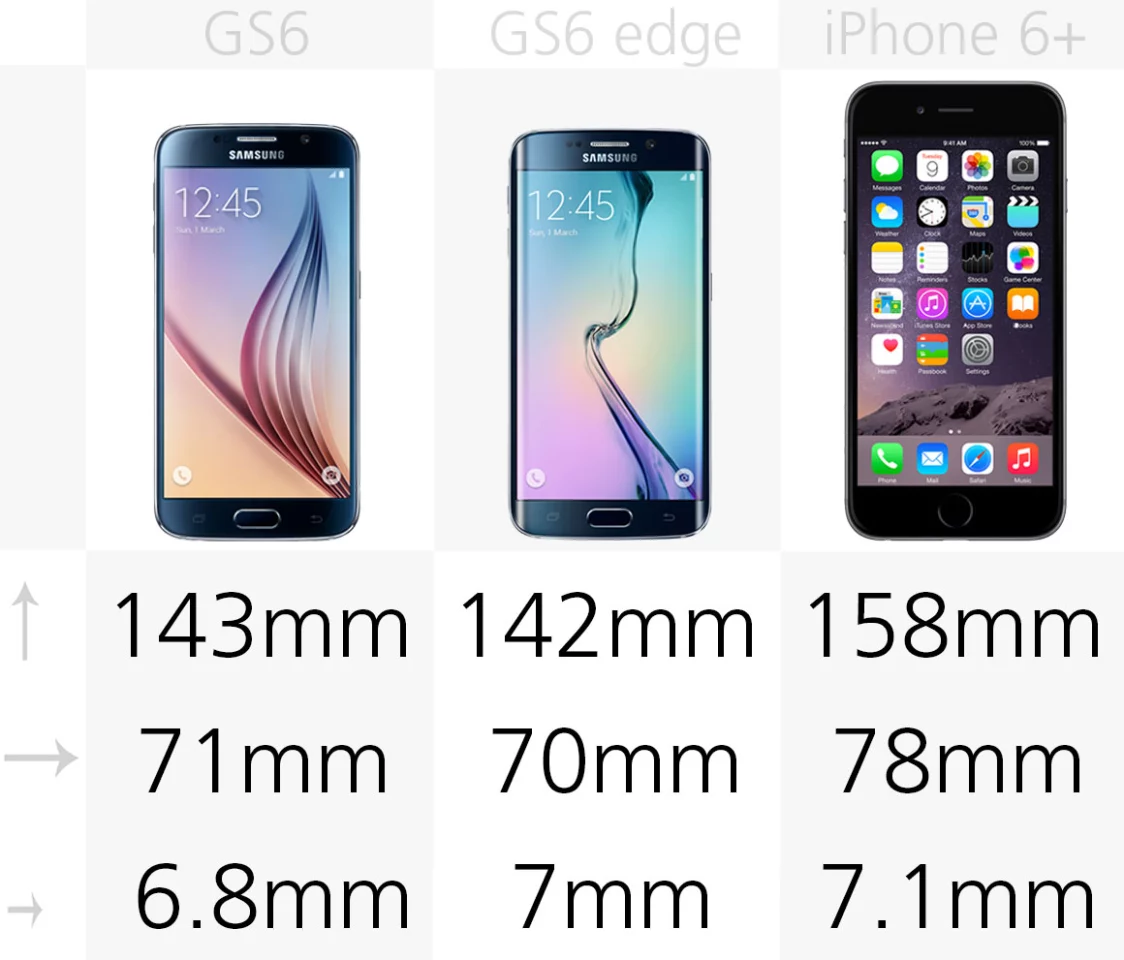
Though the new Galaxy S6 phones are bigger than the iPhone 6, they're still quite a bit smaller than Apple's supersized phone. The iPhone 6 Plus is 11 percent taller and (also) 11 percent wider.
All three phones are very thin, with the GS6 and GS6 edge just edging out the iPhone.
Weight
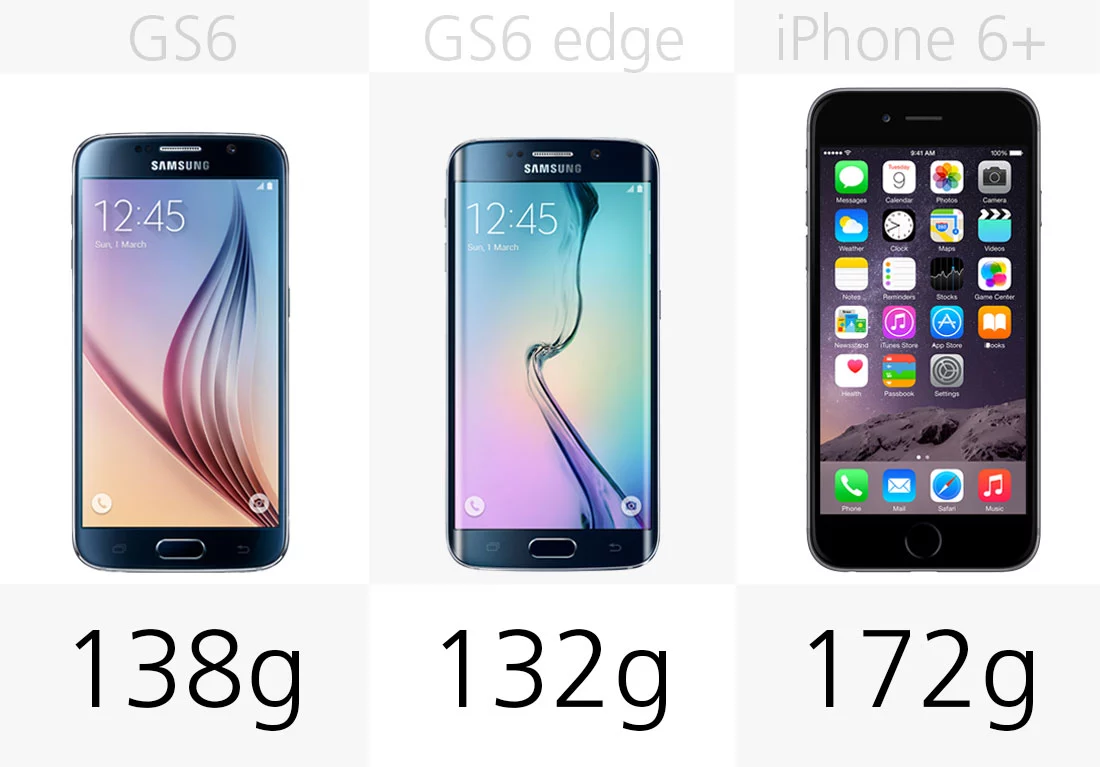
The Galaxy S6 is 20 percent lighter than the iPhone 6 Plus, and the GS6 edge is 23 percent lighter. When you take the size differences into account, though, all three should feel very light for their respective sizes.
Build (back)
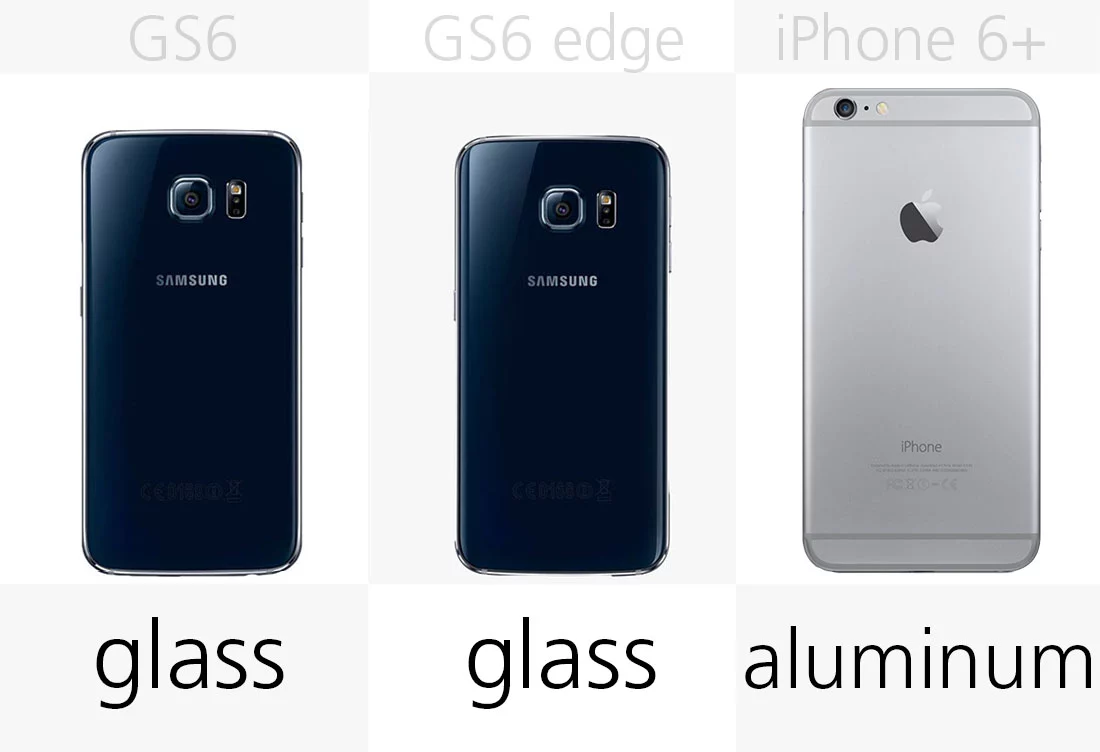
The two Samsung phones have glass (Gorilla Glass 4) backs.
Build (sides)
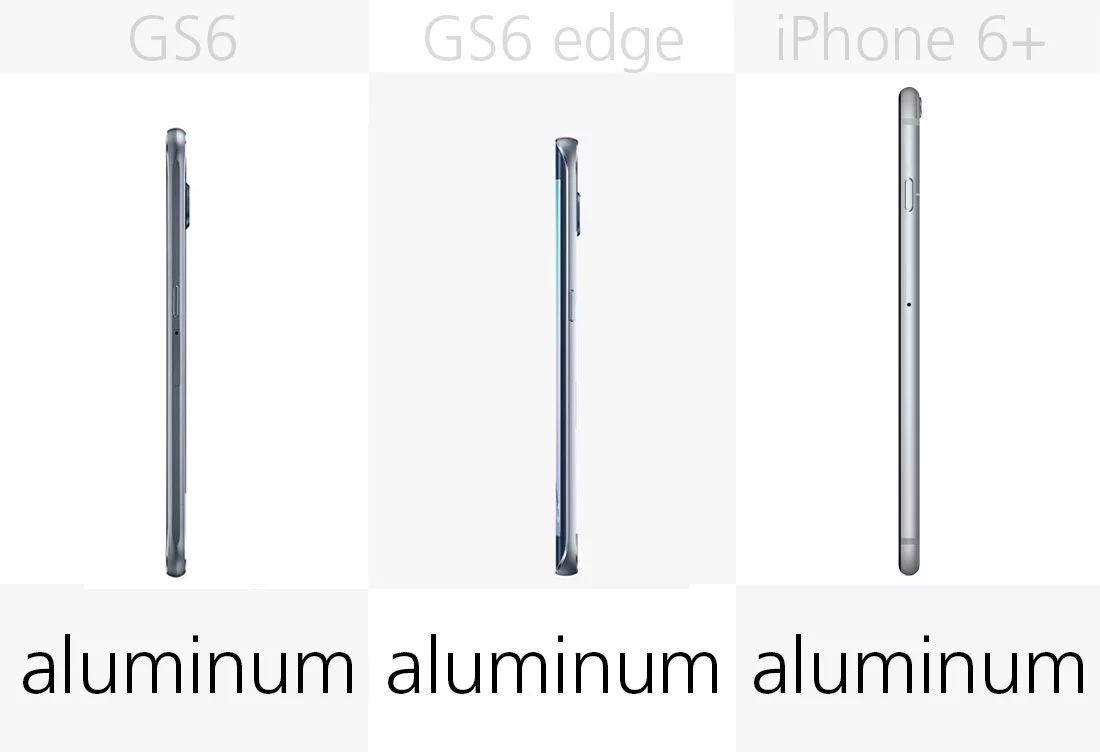
The Galaxy S6 pair also has an aluminum frame keeping those panes of finely chiseled glass in place.
Colors
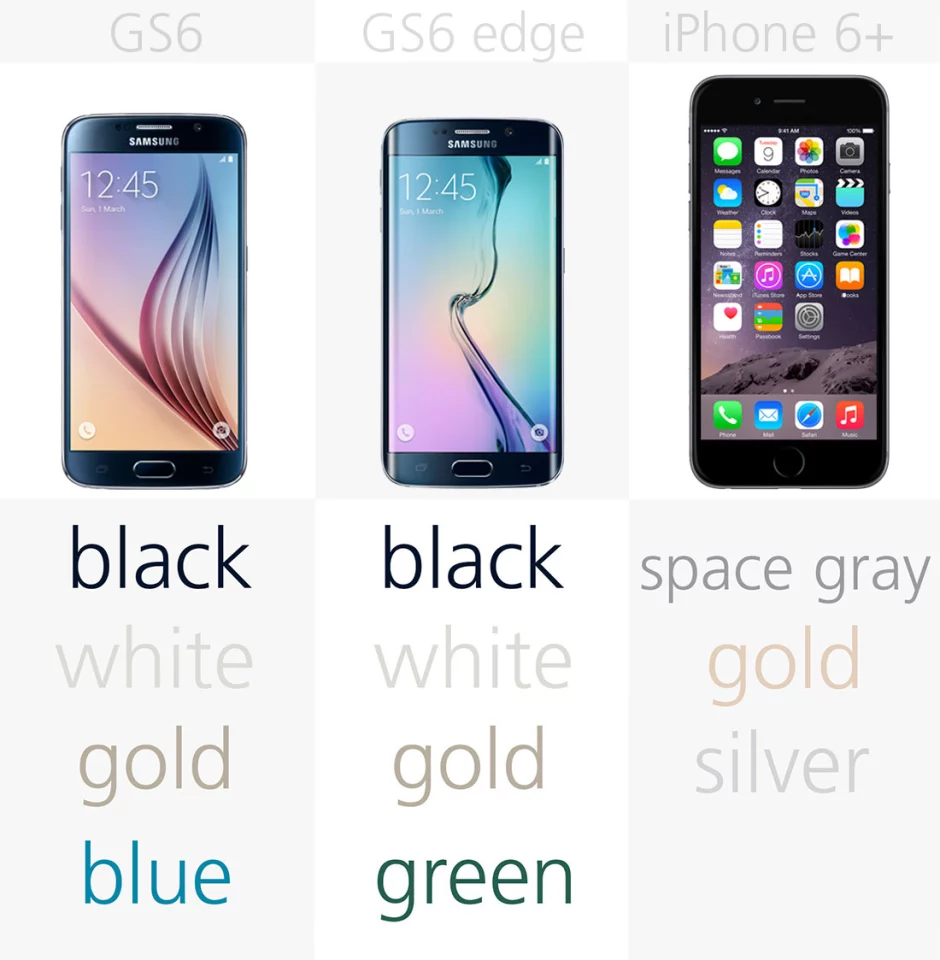
You'll have four color options to choose from for the two Galaxy S6 phones, and three options for the iPhone.
Display (size)
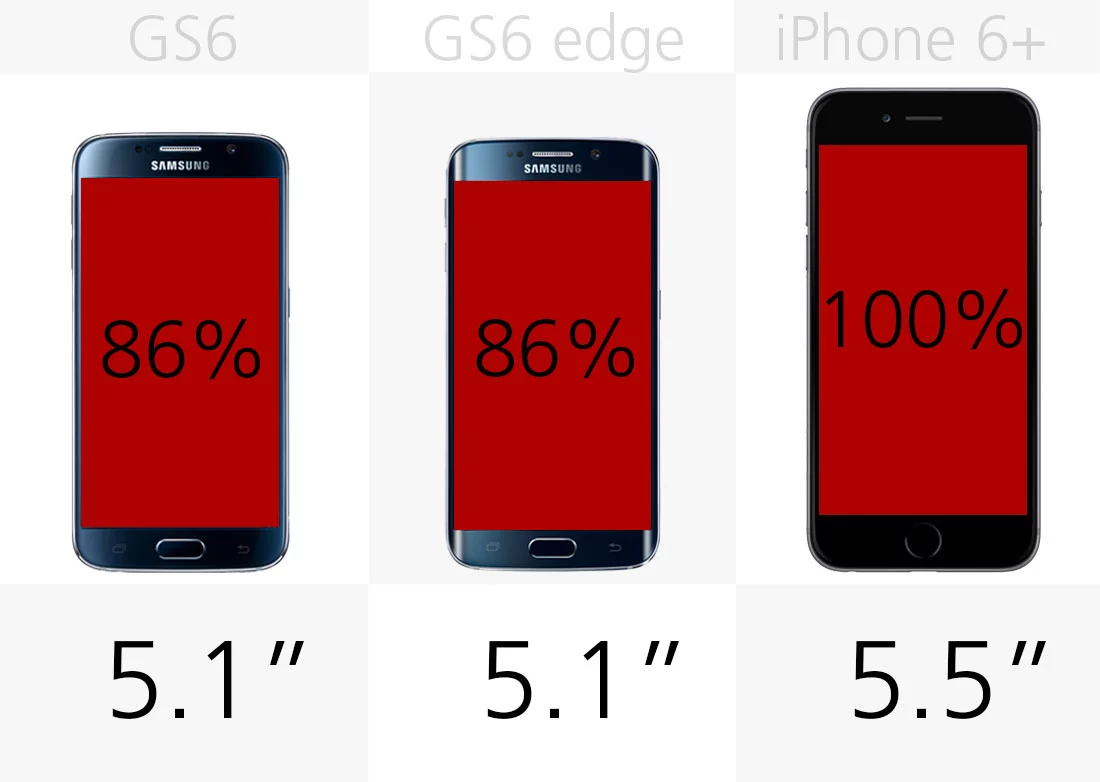
The 5.1-in screens on the Galaxy phones are 86 percent as big as the iPhone's 5.5-incher.
Display (resolution)
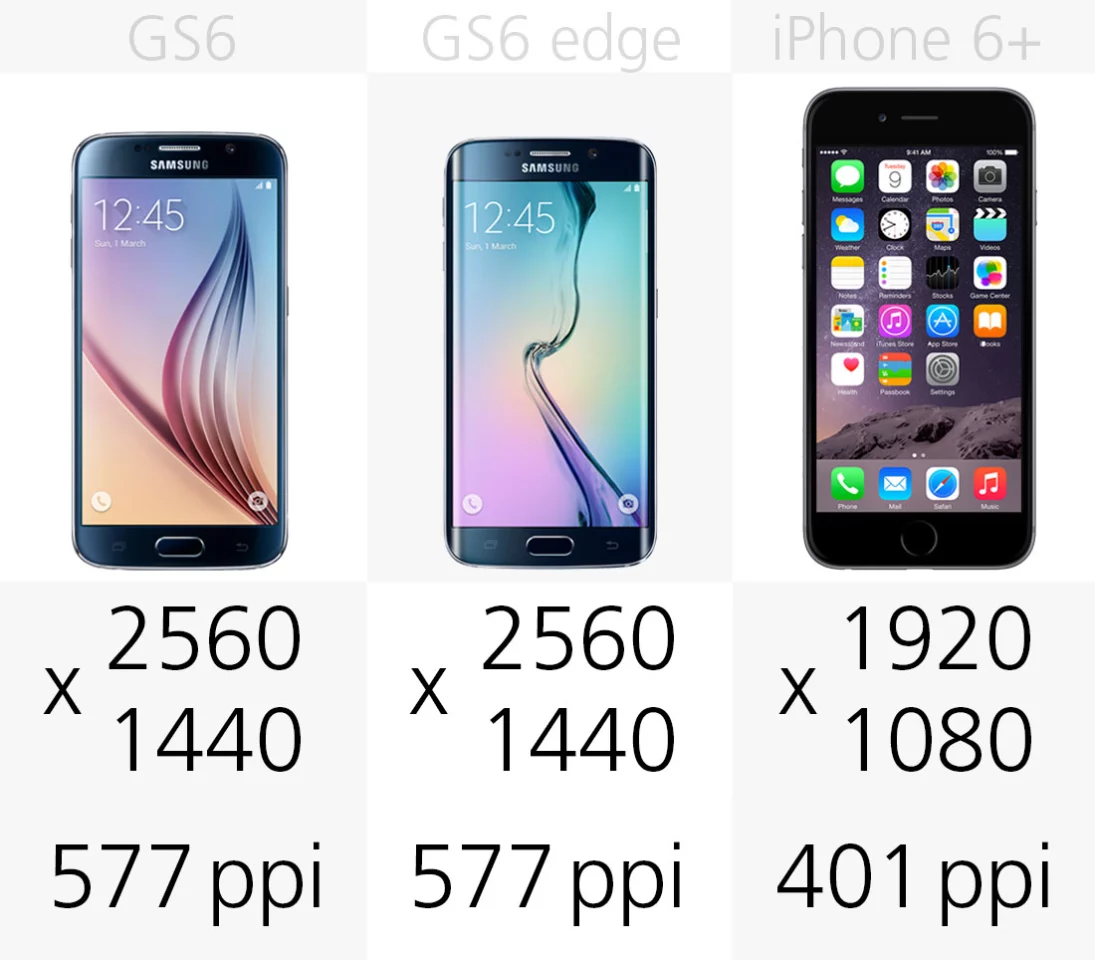
Sharpness is a big advantage for the Galaxy S6 pair, though the iPhone's overall screen quality is very good – making it hard to complain too much about a less than cutting-edge pixel density.
Display (type)
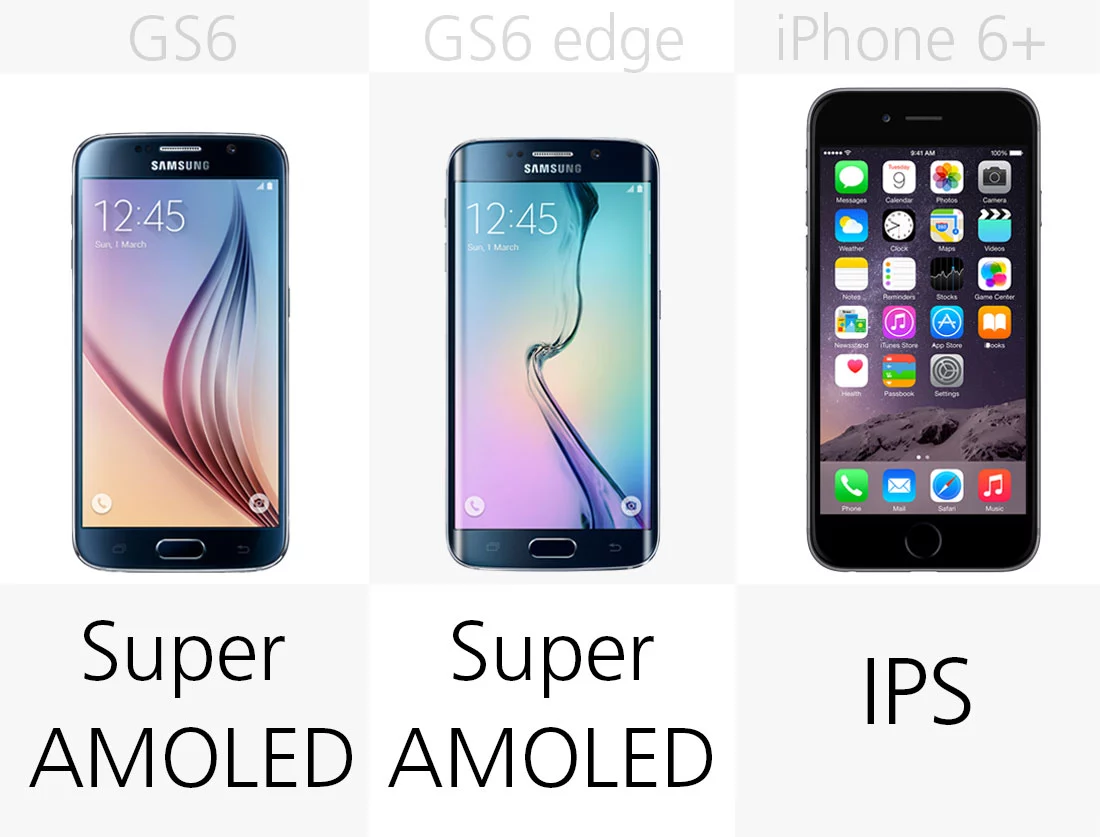
The iPhone's IPS panel was one of the best smartphone screens of 2014. The pair of Galaxy S6es use Super AMOLED tech, which has rich colors (sometimes surreally so), deep blacks and high contrast.
Curved screen
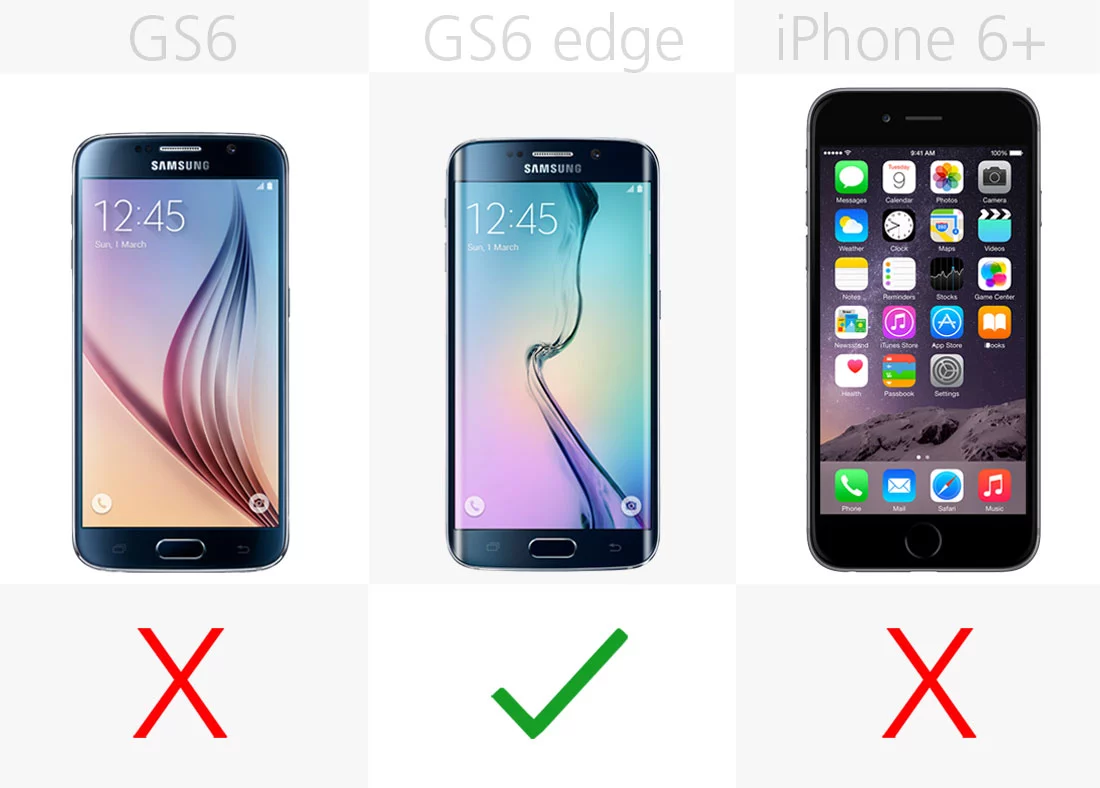
We'll have to wait for our reviews of the new Samsung flagships to have much to say about the Galaxy S6 edge's curved screen (it slopes down on either side), but we found Samsung's similar approach in the Galaxy Note Edge to be fun, but largely an expensive novelty.
Fingerprint sensor
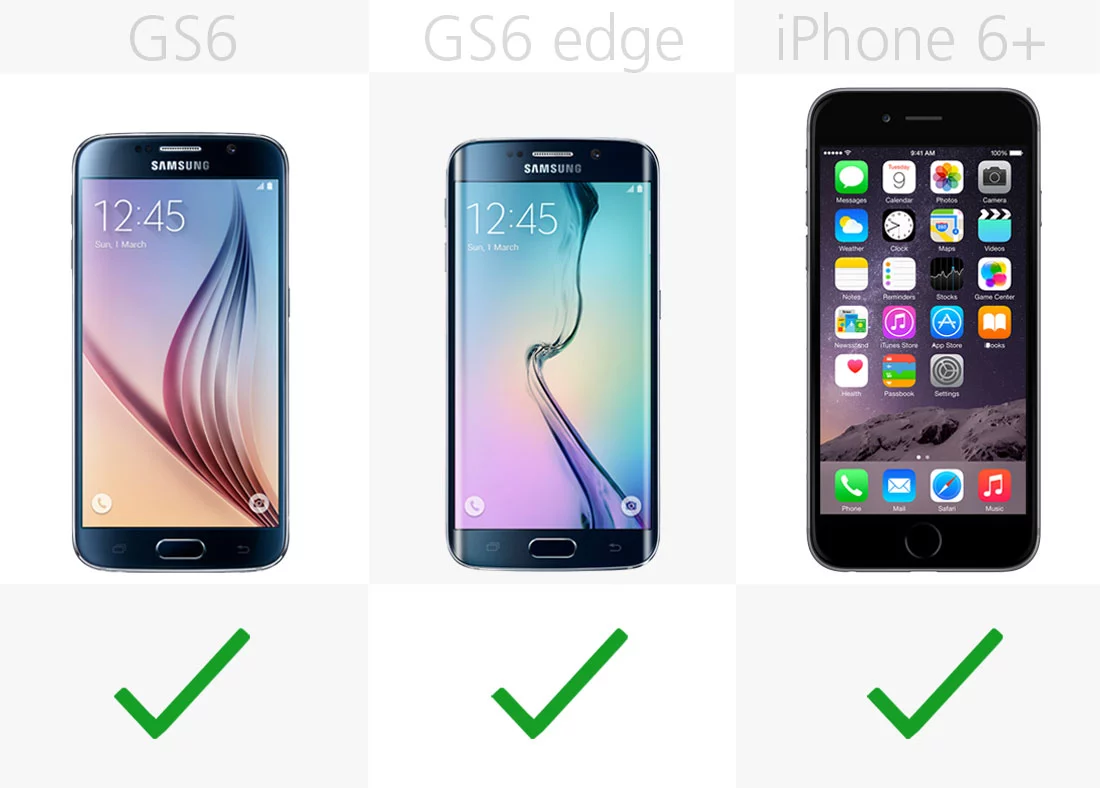
In 2014 Samsung used swipe-based fingerprint sensors in its mobile devices' home buttons, but this year it's matching Apple (at least on paper) with touch-based sensors.
Mobile payments
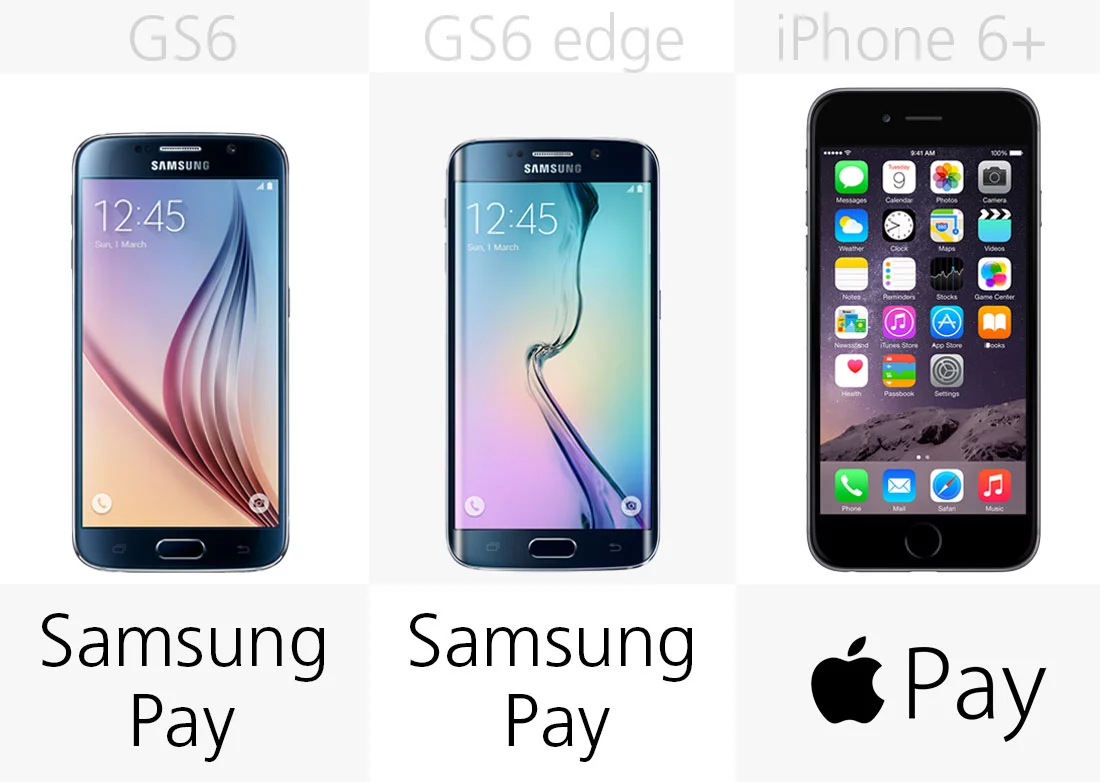
You can use those sensors on your phone to securely pay for goods with either Apple Pay or Samsung's (oh-so originally named) Samsung Pay. Merchant adoption of Apple's mobile payment service has been spreading pretty quickly in the US, but Samsung's uses a technology that tricks swipe-based credit card readers into thinking your phone is a swiped card – making Samsung's approach almost universally accepted from the get-go.
Processor
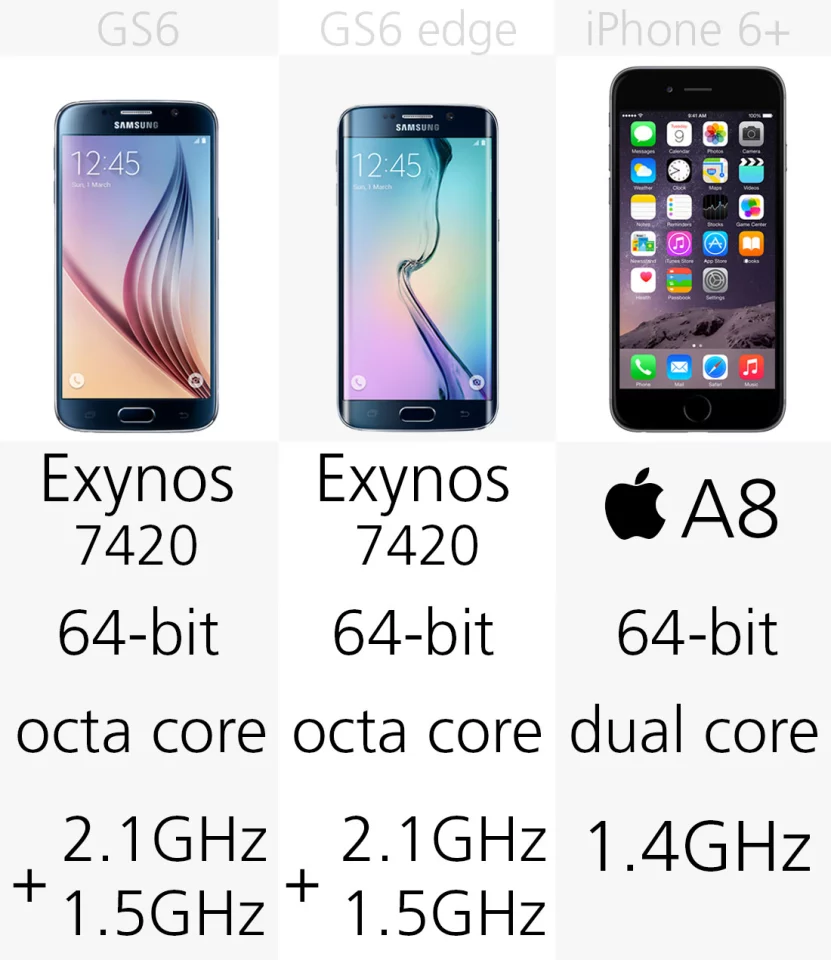
Apple's A8 SoC delivers great performance when paired with iOS 8. We'll have more to say about the Galaxy pair's performance once we get review units in our hands.
RAM
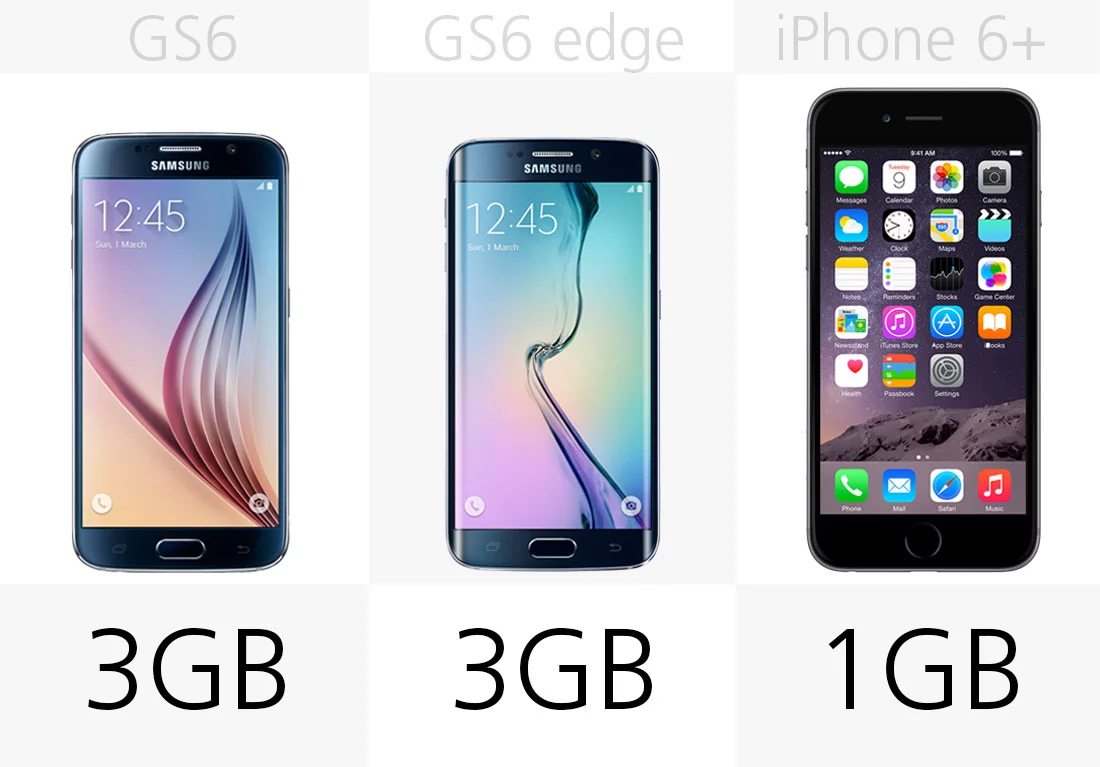
Opening apps, cycling through backgrounded apps … these kinds of tasks largely depend on RAM, which is a big advantage for the Galaxy phones. Again, though, the marriage of Apple's hardware and iOS delivers performance that consistently transcends what you'd expect from specs like CPU cores, clock speeds and RAM.
Battery
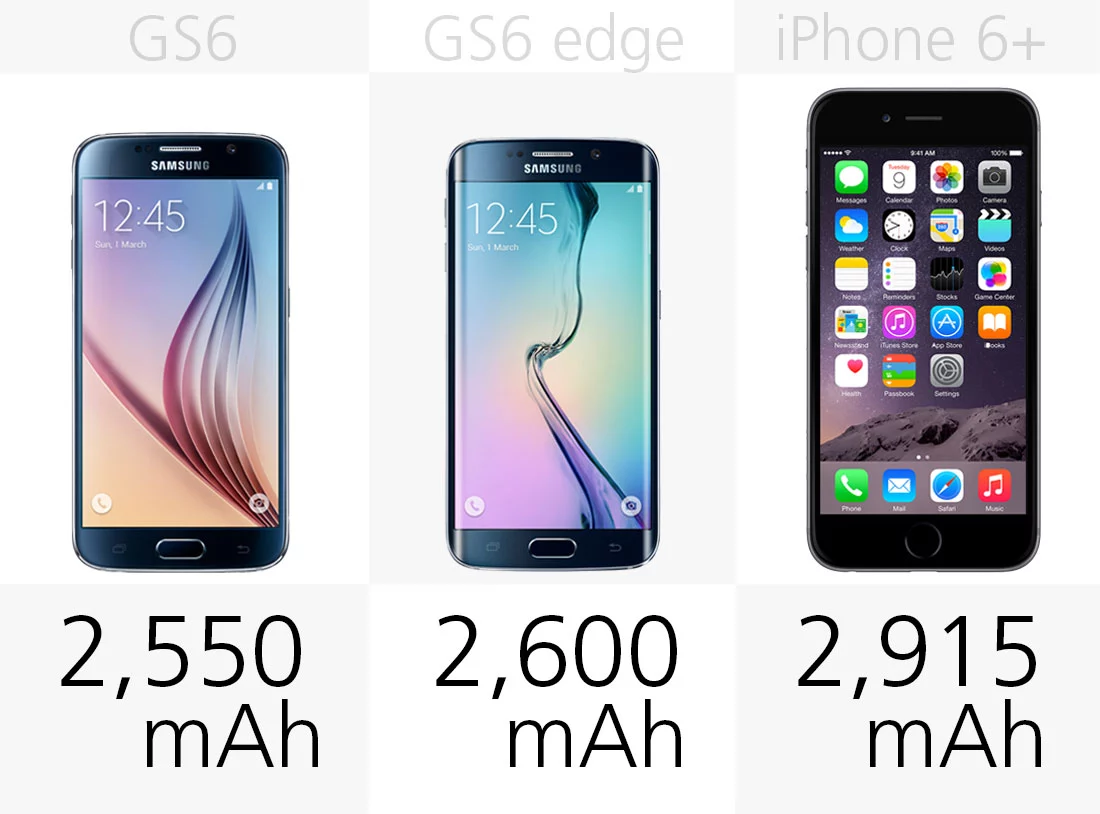
In our battery test (streaming video over Wi-Fi, with brightness at 75 percent), the iPhone 6 Plus dropped about 12 percent per hour. That's off the pace of phones like the Galaxy Note 4 and HTC One M8, but still not a bad result.
Like several other key categories, this visual tells you little about the Galaxy S6's and GS6 edge's results, so stay tuned for our reviews.
Fast charging
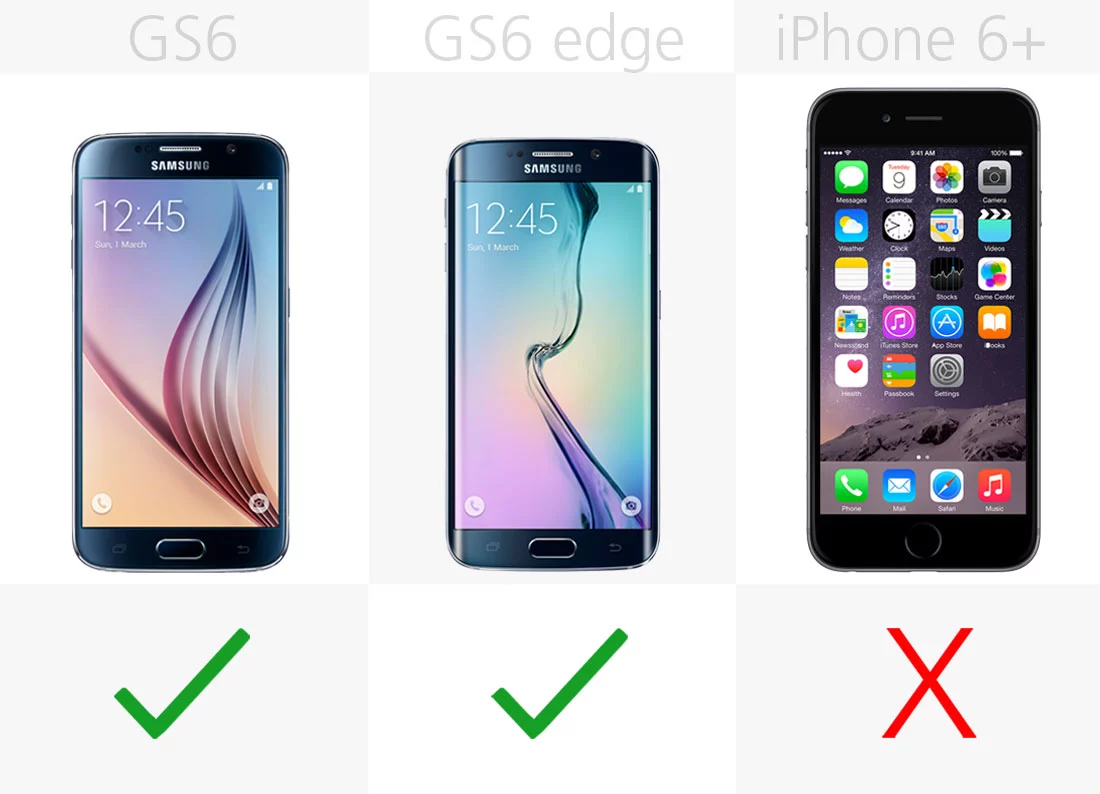
With the switch from Qualcomm to Samsung processors, it's no longer based on Qualcomm Quick Charge 2.0, but the GS6 pair still has some quick charging tech, which can quickly juice up a nearly dead battery to a respectable state.
Ultra Power Saving Mode
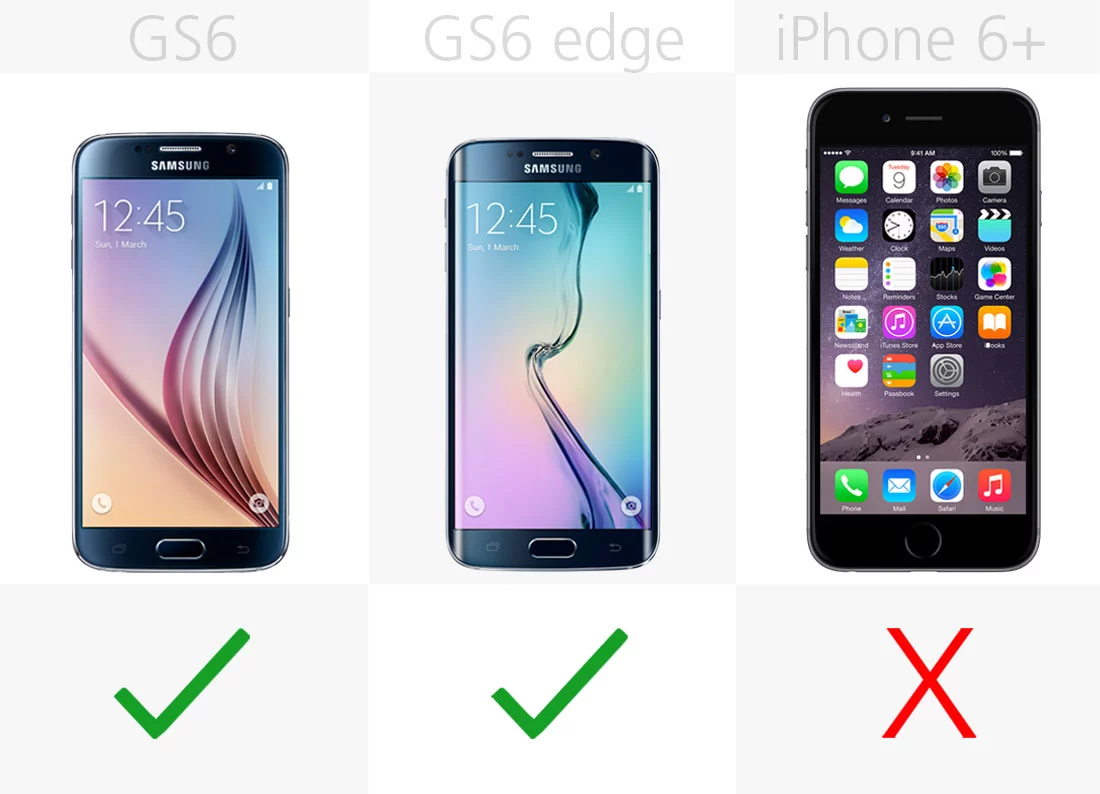
Samsung's Ultra Power Saving Mode can keep you on the grid when your phone is almost out of juice (by basically turning your expensive smartphone into a glorified feature phone until you can get to a charger).
For more on UPS Mode, you can revisit our Galaxy S5 review from early last year.
Wireless charging
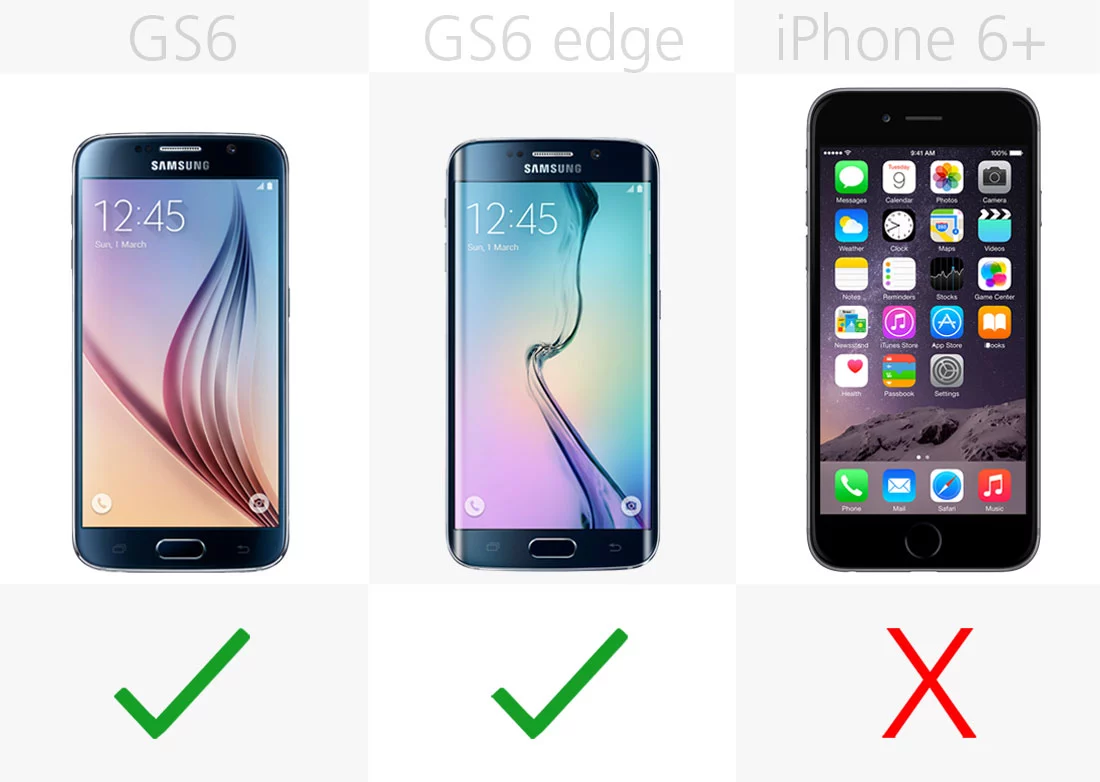
You can buy wireless charging cases for the iPhone, but the Galaxy S6 and GS6 edge support it natively, out of the box.
Removable battery
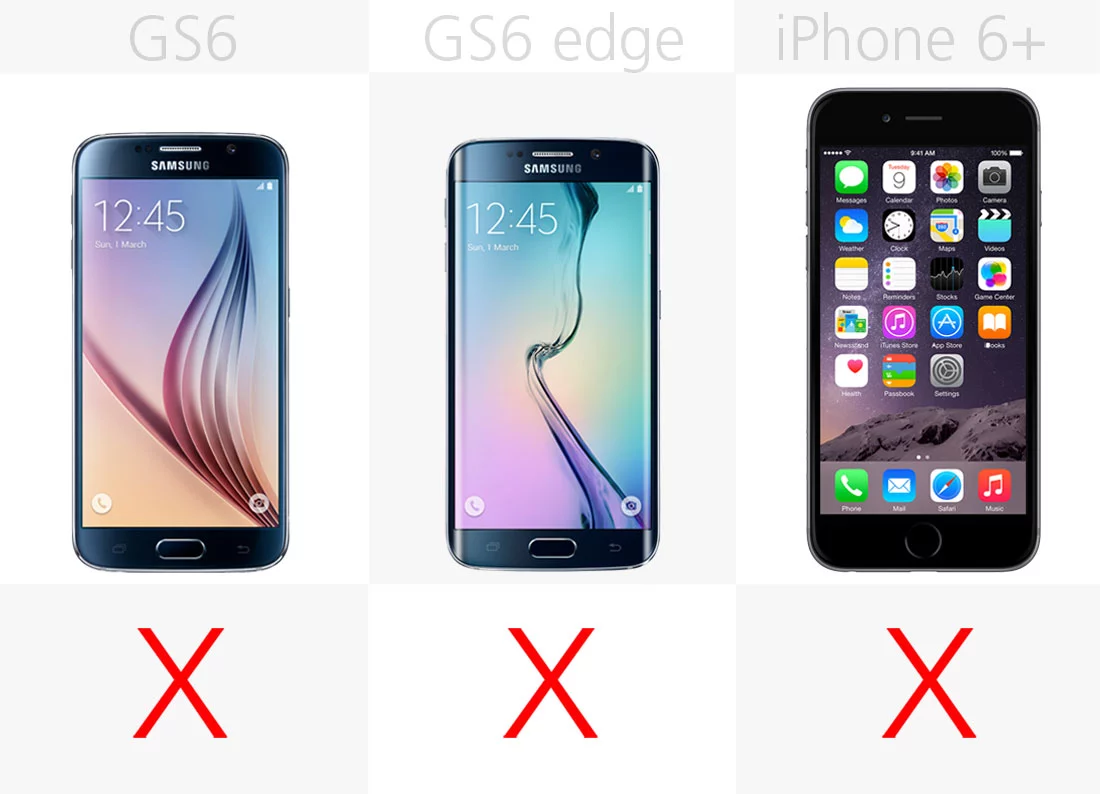
This is a first in a Samsung flagship, as you won't be able to peel off the GS6's backing to remove its battery.
Storage
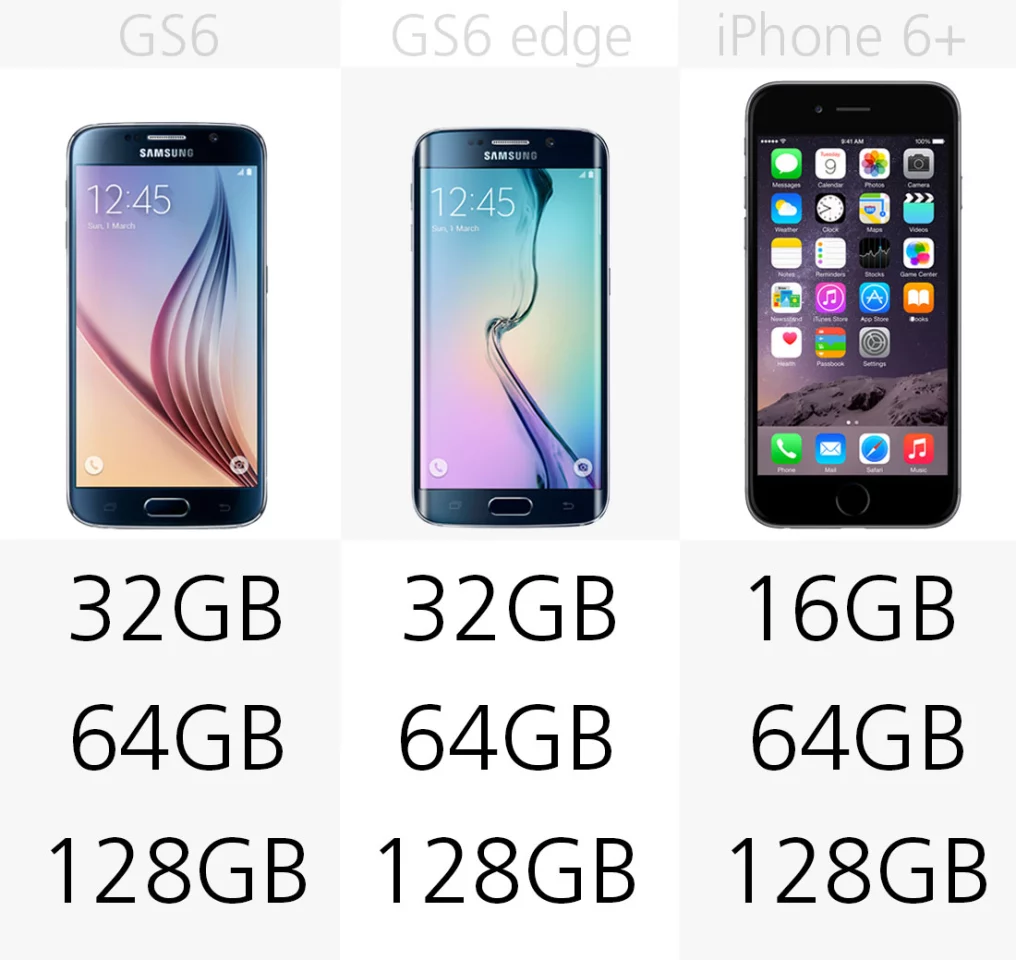
The only difference with internal storage is that Samsung's ground-level models double the 16 GB found in the cheapest iPhone 6 Plus.
MicroSD
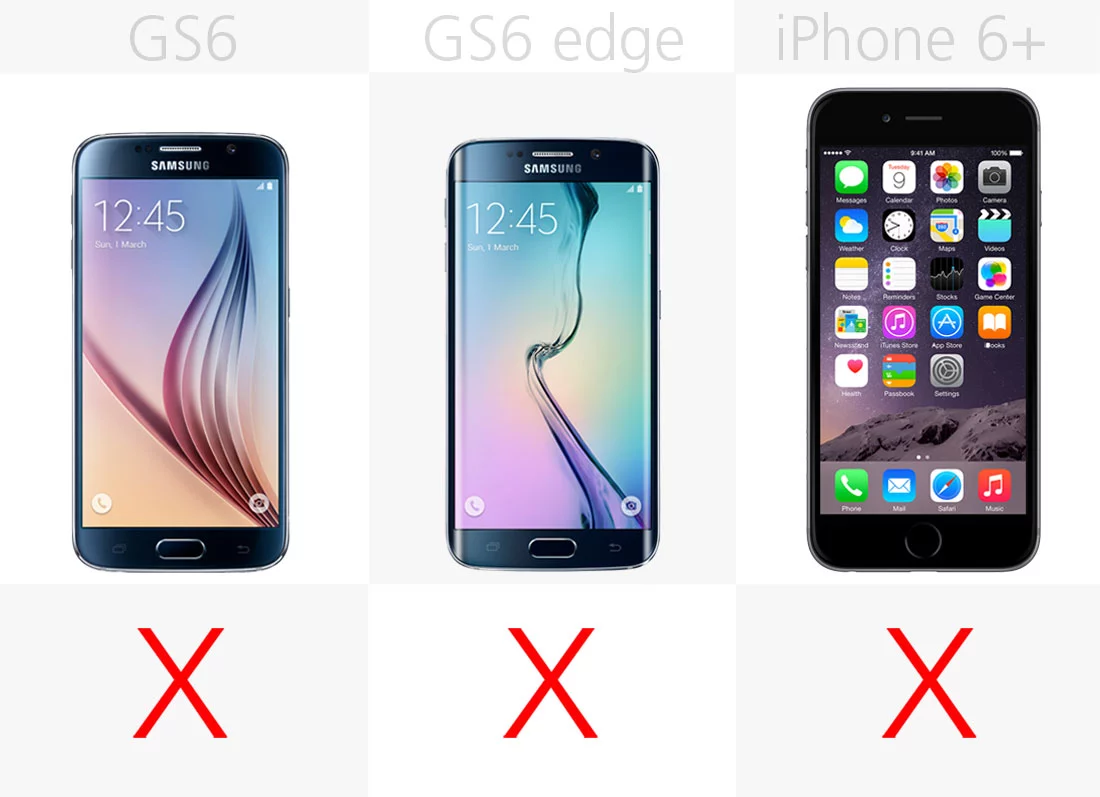
This is another first for a Galaxy S flagship, as Samsung ditched the microSD slot this year.
Camera megapixels (rear)
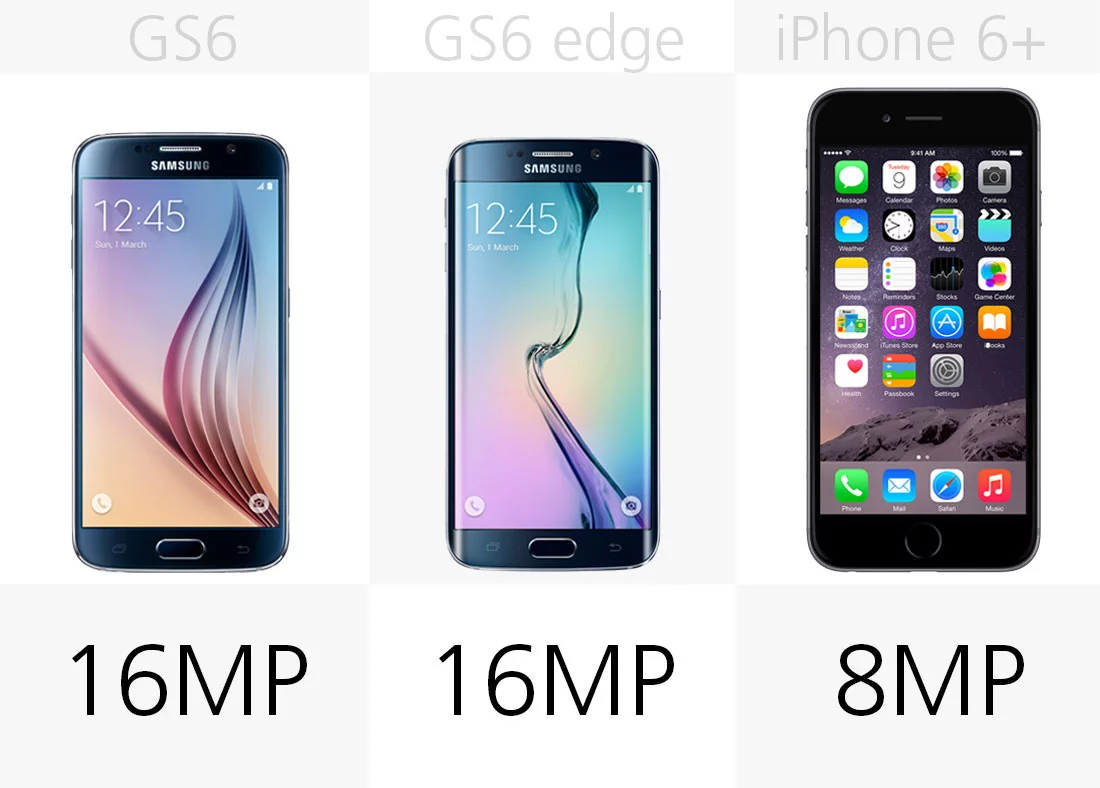
The Samsung phones' rear cameras win on resolution, but that doesn't always mean much. The iPhone's camera is still one of the best smartphone shooters you can find.
Camera megapixels (front)
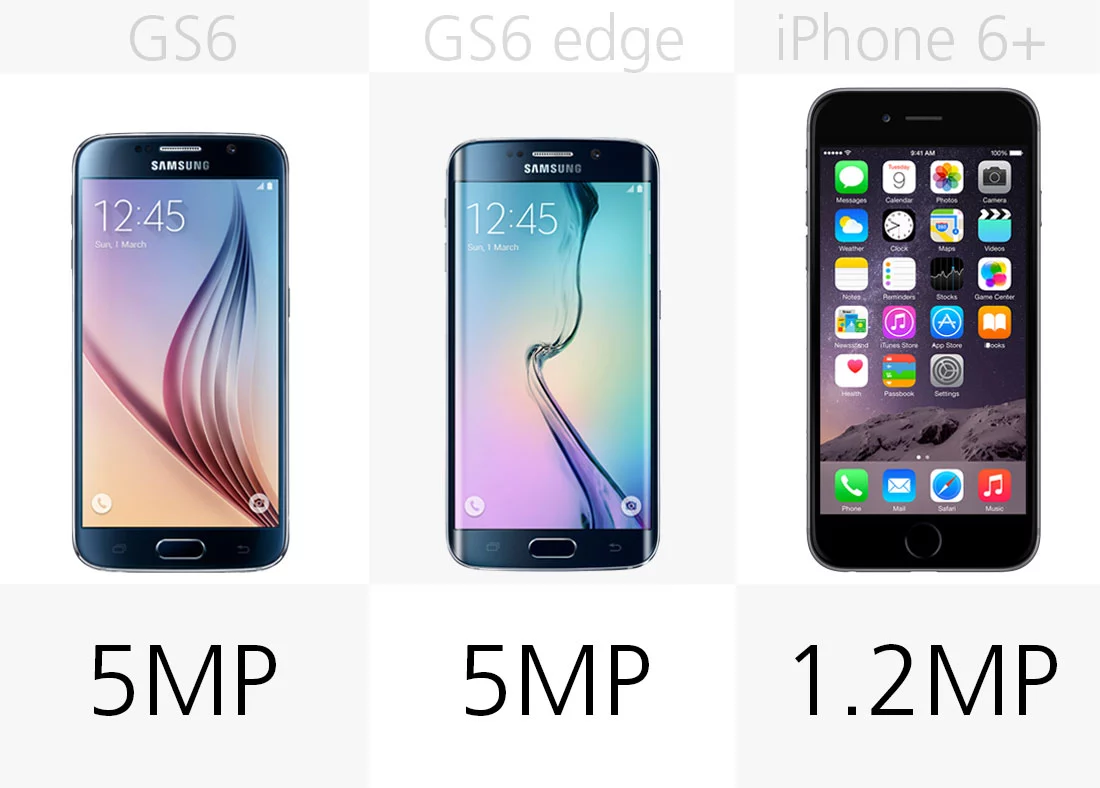
The GS6 handsets' should be better for selfies and video chat, with 5 MP front-facing cameras (along with a wide-angled selfie mode).
OIS
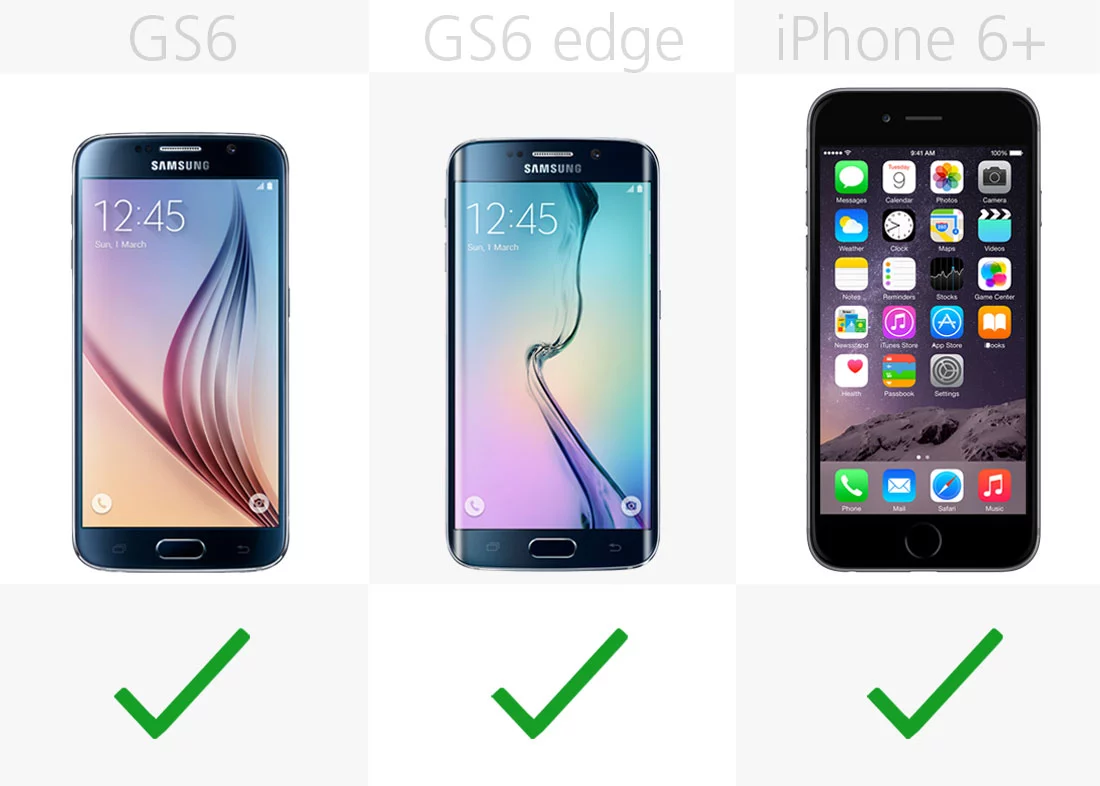
The smaller iPhone 6 doesn't have Optical Image Stabilization, but the iPhone 6 Plus (along with the two Samsung flagships) does.
Camera aperture
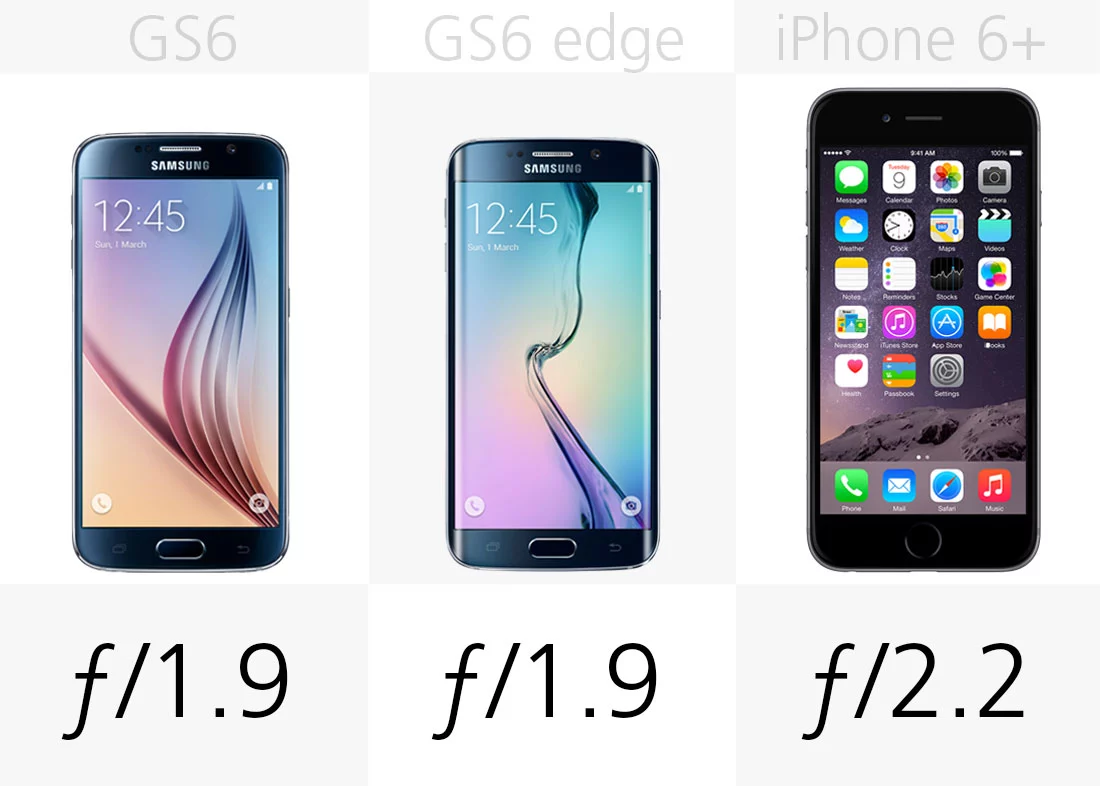
The rear cameras in the Galaxy S6 and GS6 edge have wider apertures.
Software
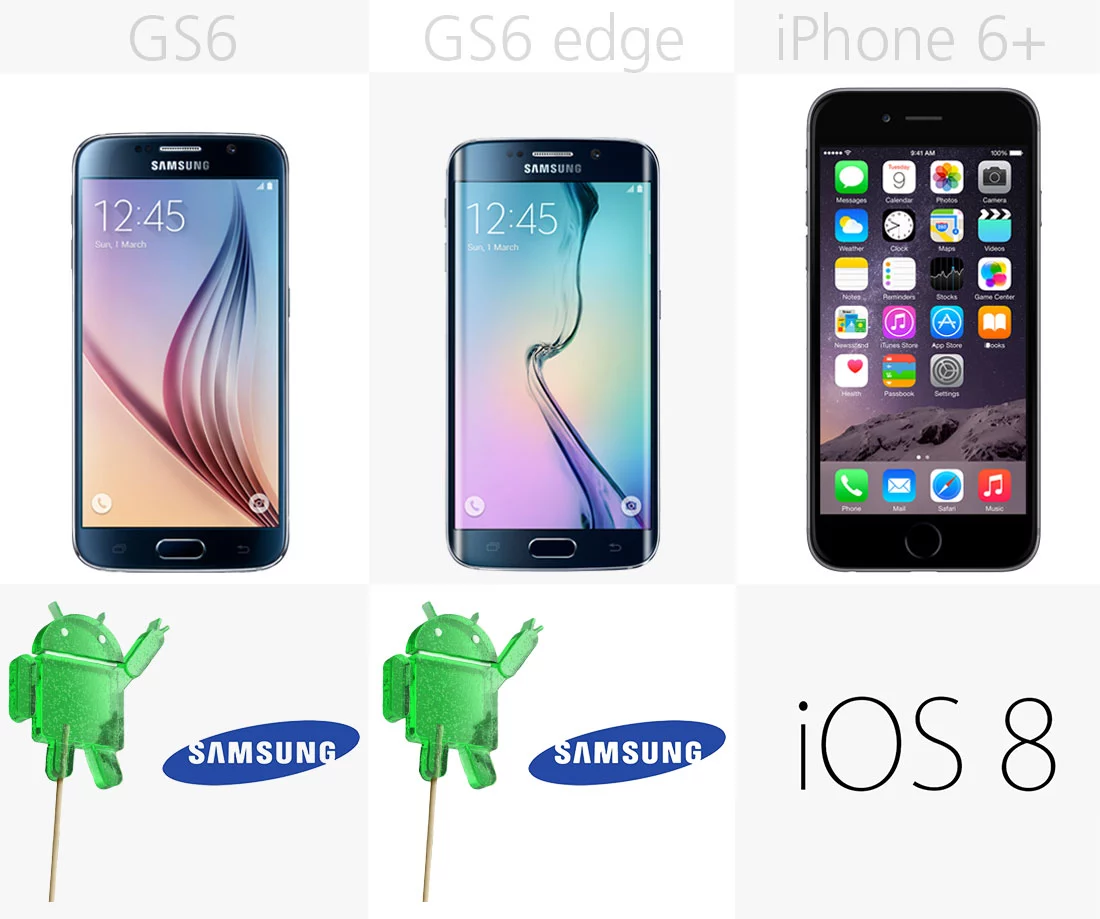
The Galaxy S6 and edge launch with Android Lollipop at their core, with a much less bloated version of Samsung's TouchWiz UI sitting on top. The iPhone, of course, runs iOS 8.
Release
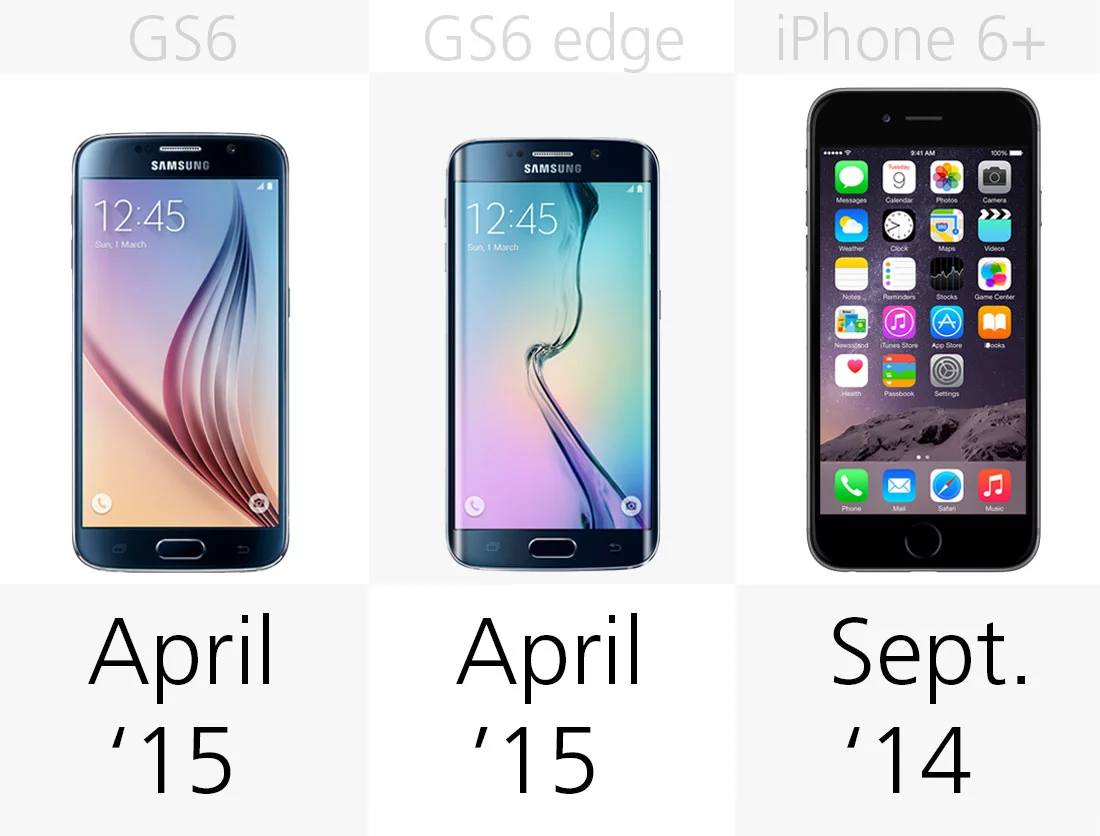
The latest iPhones have already been on store shelves for six months. The new GS6es launch on April 10.
Starting price (full retail)
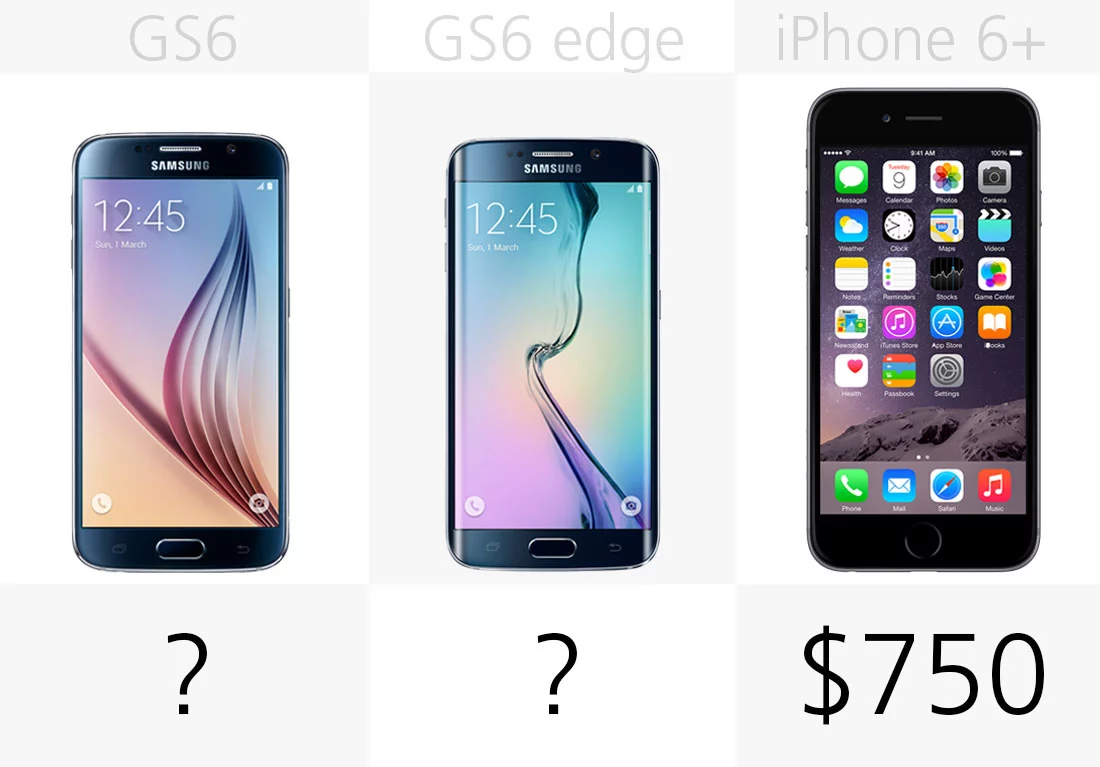
One thing we still don't know about the Galaxy S6 and Galaxy S6 edge is what they'll cost. Will Samsung hike them up in exchange for their new glass and metal designs? And how much of a premium will it ask for the GS6 edge's curved screen? As we approach the release date, we should start hearing more before long.
Starting price (on-contract)
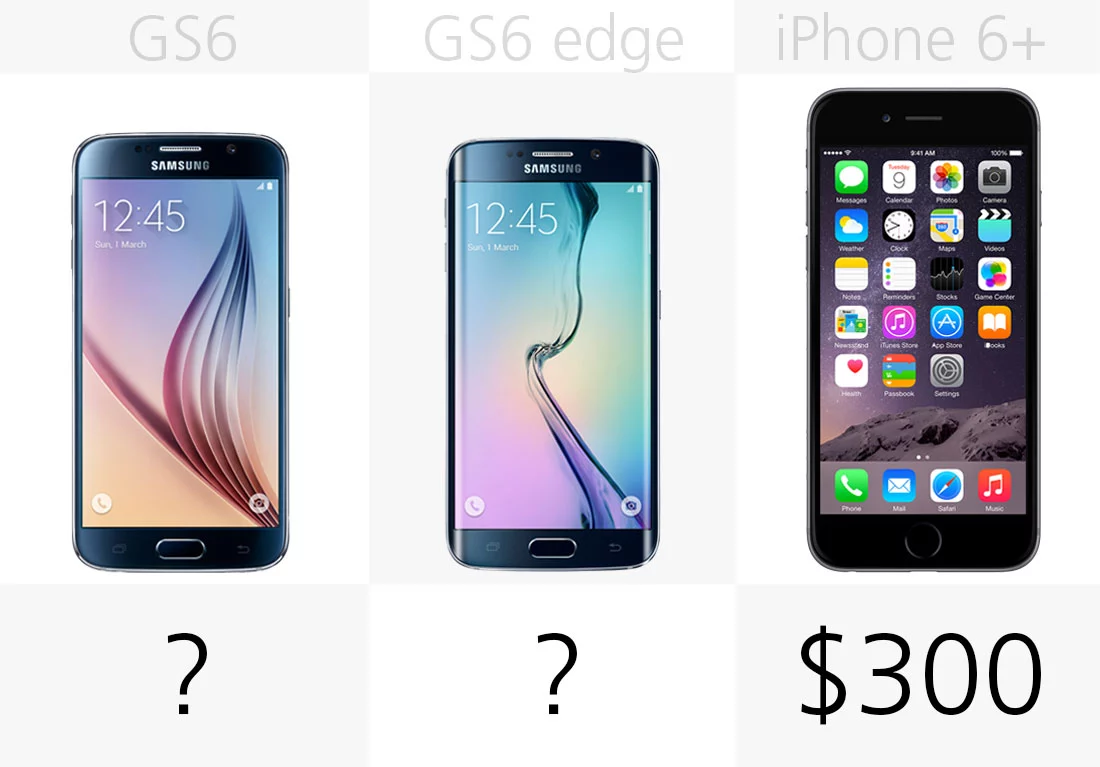
On-contract pricing is in the same boat. For what it's worth, previous years' Galaxy S flagships started at US$200 on-contract.
For more, you can check out Gizmag's full reviews of the Galaxy S6, Galaxy S6 edge and iPhone 6 Plus. And to include some other great phones, you can check out our latest Smartphone Comparison Guide.










